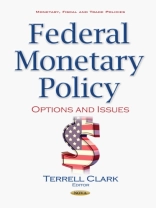Congress has delegated responsibility for monetary policy to the Federal Reserve (the Fed), but retains oversight responsibilities to ensure that the Fed is adhering to its statutory mandate of "maximum employment, stable prices, and moderate long-term interest rates." The Fed has defined stable prices as a longer-run goal of 2% inflation. The Fed’s responsibilities as the nation’s central bank fall into four main categories: monetary policy, provision of emergency liquidity through the lender of last resort function, supervision of certain types of banks and other financial firms for safety and soundness, and provision of payment system services to financial firms and the government. The Fed’s monetary policy function is one of aggregate demand management-stabilizing business cycle fluctuations. The Federal Open Market Committee (FOMC), consisting of 12 Fed officials, meets periodically to consider whether to maintain or change the current stance of monetary policy. The Fed’s conventional tool for monetary policy is to target the federal funds rate-the overnight, interbank lending rate. It influences the federal funds rate through open market operations, transactions that have traditionally involved Treasury securities. This book provides an overview of monetary policy and recent developments, a summary of the Fed’s actions following the financial crisis, and ends with a brief overview of the Fed’s regulatory responsibilities.
Terrell Clark
Federal Monetary Policy [PDF ebook]
Options and Issues
Federal Monetary Policy [PDF ebook]
Options and Issues
Köp den här e-boken och få 1 till GRATIS!
Formatera PDF ● Sidor 193 ● ISBN 9781536104936 ● Redaktör Terrell Clark ● Utgivare Nova Science Publishers ● Publicerad 2016 ● Nedladdningsbara 3 gånger ● Valuta EUR ● ID 7216213 ● Kopieringsskydd Adobe DRM
Kräver en DRM-kapabel e-läsare












